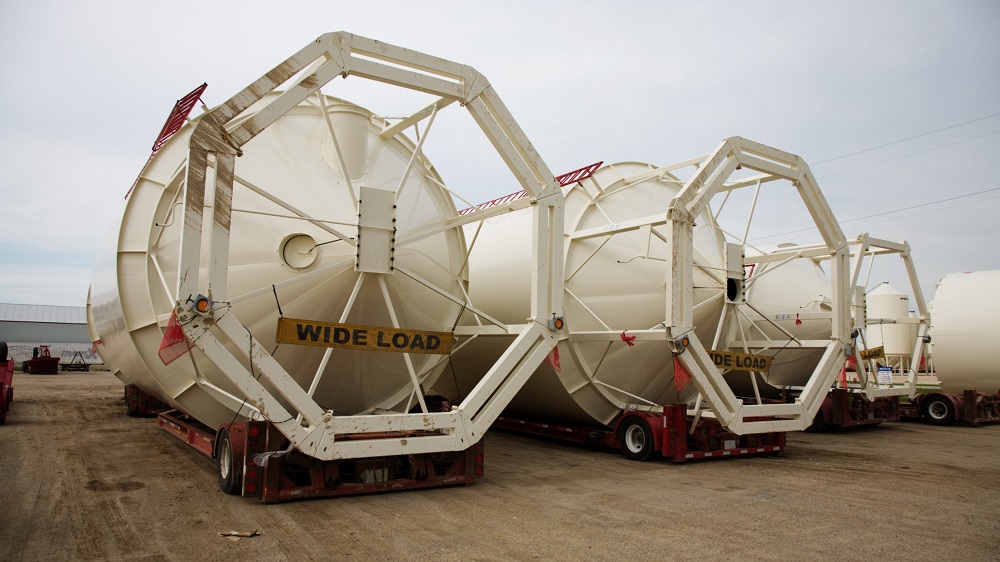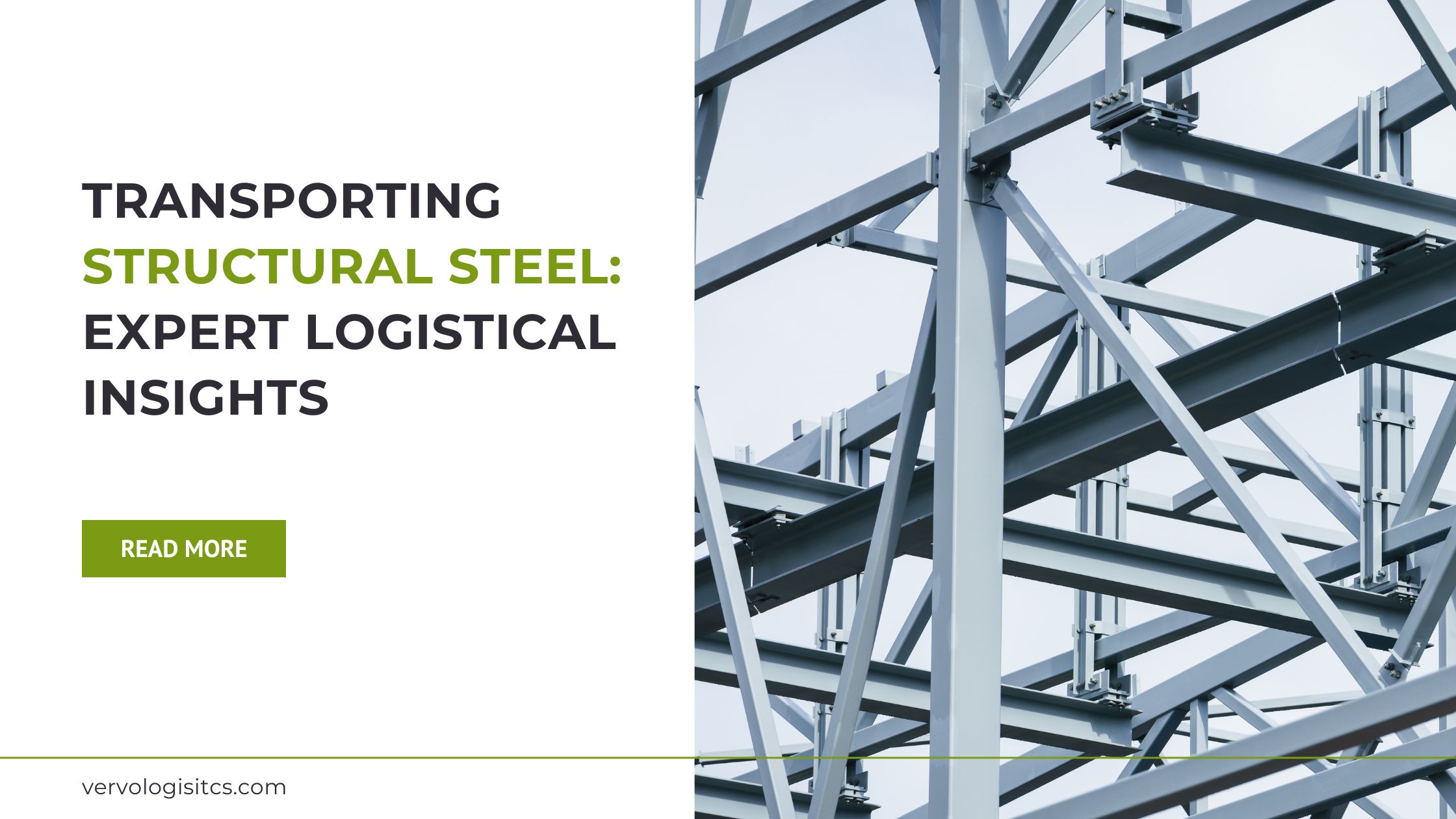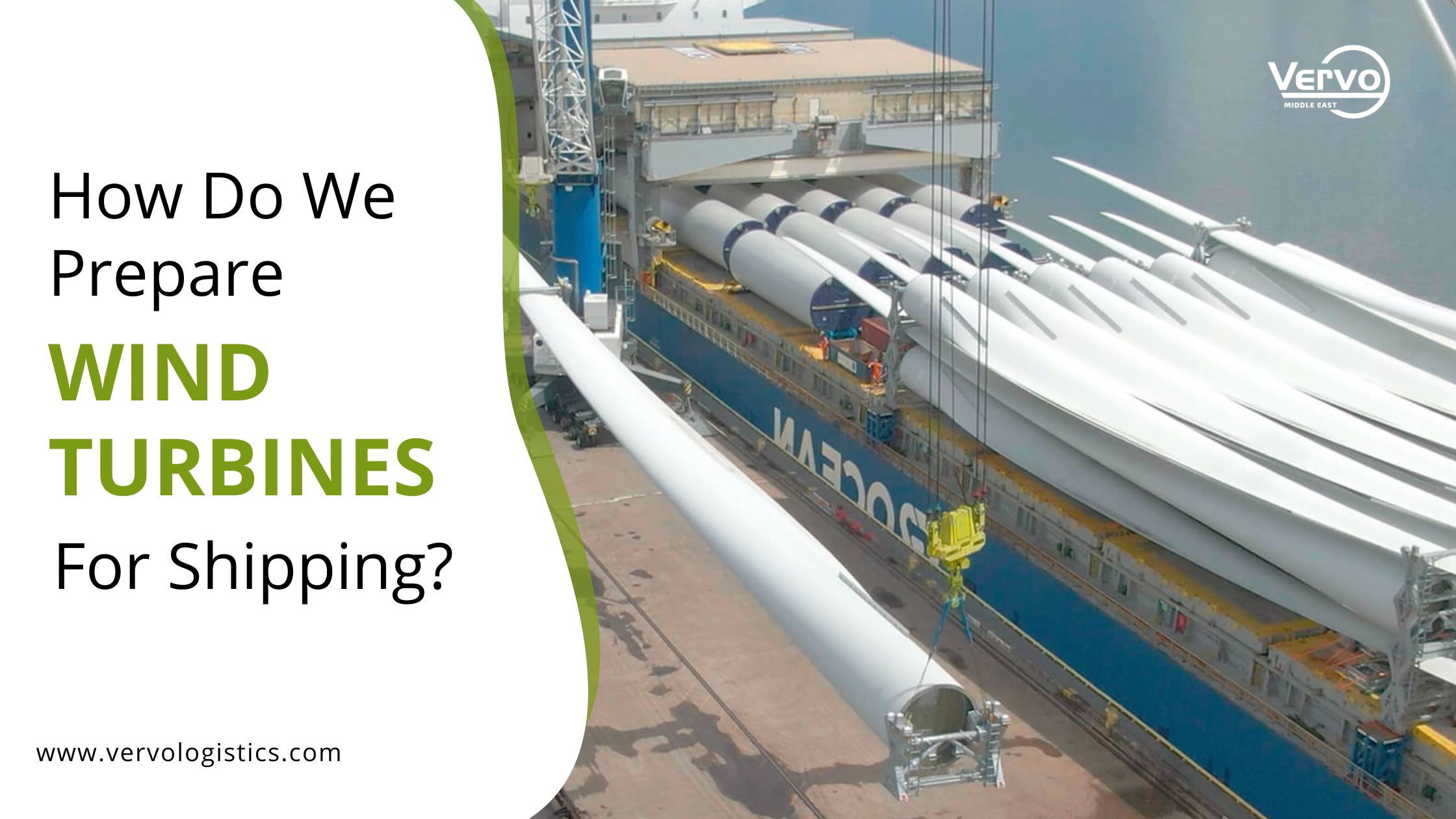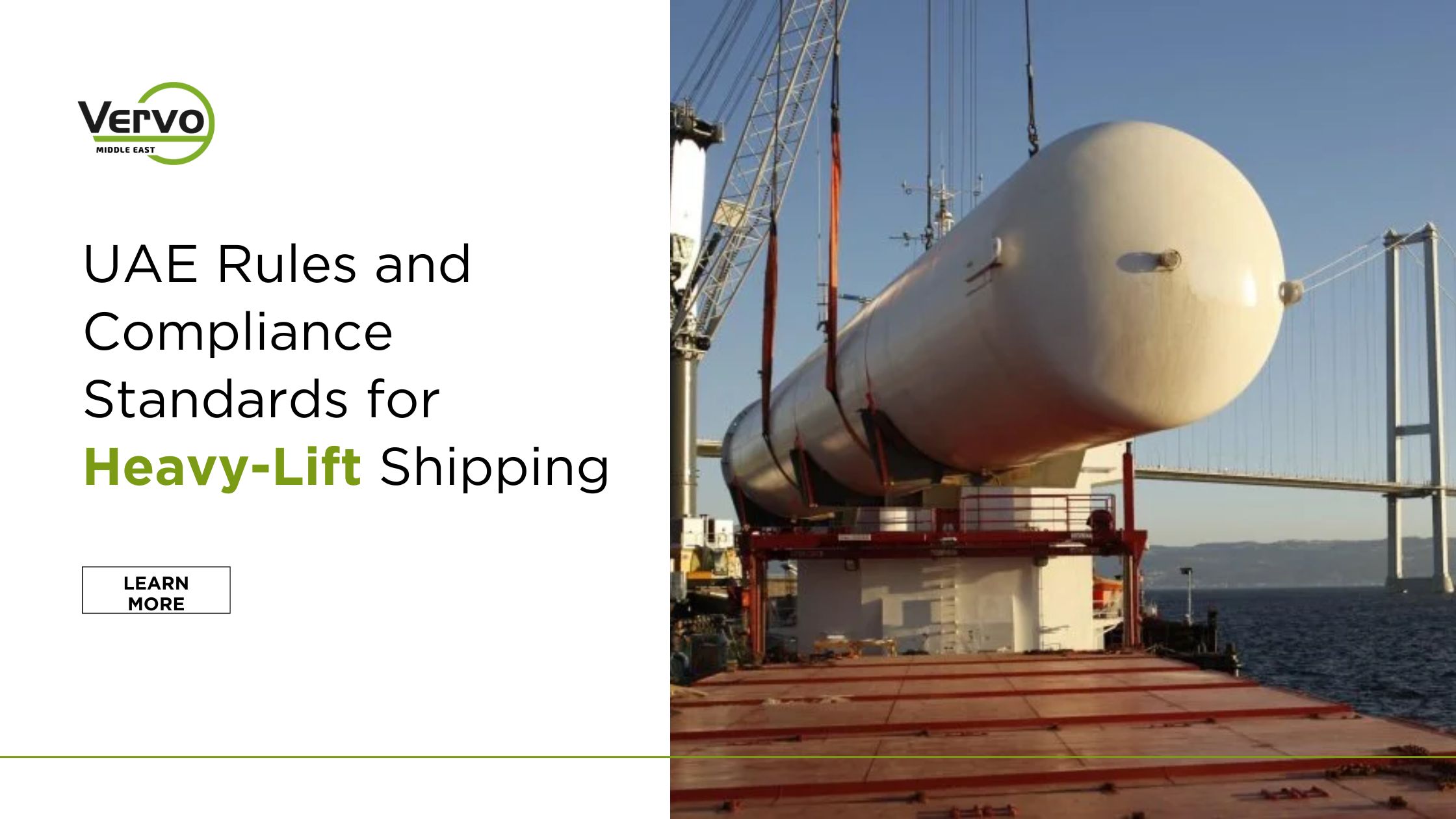Shipping heavy-lift cargo to the UAE is a complex process. It requires careful planning and coordination to ensure that the cargo is transported safely and efficiently. In this article, we will explore some of the best practices for shipping heavy-lift cargo to the UAE, including the use of specialized equipment and personnel, the importance of route planning, and cargo securing.
Besides customs clearance of heavy-lift shipments in the UAE, and all relevant regulations that you must follow. By following these best practices provided by Vervo Middle East, shippers can minimize the risks associated with shipping heavy-lift cargo and ensure that their cargo arrives at its destination on time and in good condition.
Heavy-lift, out-sized, or project cargo?
Heavy-lift cargo, out-sized cargo, and project cargo are often used interchangeably, but they can refer to slightly different types of cargo.
Heavy-lift cargo is generally defined as any type of cargo that is too large, too heavy, or too awkward to be transported using standard shipping methods. This can include a wide range of items, such as industrial equipment, Yachts and boats, military hardware, and more.
Project cargo is cargo that is being shipped as part of a specific project, such as the construction of a building or the installation of a power plant. Project cargo can include a wide range of items, such as construction materials, industrial equipment, and other specialized items that are needed for the project.
Out-sized cargo, on the other hand, is defined as cargo that is “too large” to be transported using standard shipping methods. This can include items such as large machinery, and other oversized items that cannot be shipped using standard shipping containers or cargo holds.
In many cases, project cargo and out-sized cargo will also be considered heavy-lift cargo, as they may be too large, too heavy, or too awkward to be transported using standard shipping methods. However, not all heavy-lift cargo is necessarily part of a specific project or out-sized. Some heavy-lift cargo, such as military hardware or aerospace components, may be able to be transported using standard shipping methods, even though it is very heavy.
Contact a freight expert today to know the type and classification of your cargo for free!
Shipping methods available for transporting heavy-lifts
When it comes to transporting heavy-lift cargo, it is important to choose the right shipping method to ensure that the cargo is moved safely. There are several shipping methods available for transporting heavy lifts, each with its own advantages and disadvantages. we will explore the different shipping methods available for transporting heavy lifts, including sea freight, air freight, road freight, rail freight, and multimodal transport. By understanding the options available, you can make informed decisions about the best shipping method for your specific needs.
Sea freight: This involves transporting the cargo by boat, either by container vessel or by specialized heavy-lift vessel. Sea freight is typically the most cost-effective option for shipping heavy-lift cargo to the UAE, especially over long distances.
Air freight: This involves transporting the cargo by air cargo plane. Air freight is generally more expensive than sea freight, but it can be a faster option, especially for shorter distances.
Road freight: This involves transporting the cargo by truck, especially within the UAE to neighboring countries. Road freight can be a convenient option for shipping heavy-lift cargo only for shorter distances.
Rail freight: This involves transporting the cargo by train. Rail freight can be a cost-effective option for shipping heavy-lift cargo, especially over long distances, and can also be more environmentally friendly than other shipping methods. With the completion of the Etihad rail project, such cargo can be transported easily by rail to other emirates and connected GCC countries.
Multimodal transport: This involves using a combination of different shipping methods, such as sea freight and road freight, to transport the cargo. This can be a convenient option for shipping heavy-lift cargo, especially if the cargo needs to be moved over a long distance and multiple modes of transportation are required (For example, door-to-door delivery.)
At Vervo Middle East, we offer all transportation modes to ship heavy lifts. Tell us your requirements and get a free heavy-lift shipping quote today!
Why do shipments of heavy lifts require special handling?
Shipments of heavy-lift cargo require special handling because they are often very large, very heavy, or very awkward, which can make them more difficult to transport than standard cargo.
Heavy-lift cargo may require the use of specialized equipment, such as cranes or other lifting devices, in order to be loaded and unloaded safely. It may also require the use of specialized vehicles, such as heavy-duty trucks or trailers, to transport it.
In addition, shipments of heavy-lift cargo may require special planning and coordination in order to ensure that they can be moved safely and efficiently. This might include conducting surveys to assess the weight and size of the cargo, analyzing the route that the cargo will be transported on, and inspecting the equipment that will be used to transport the cargo.
Overall, the special handling requirements of heavy-lift cargo are necessary to ensure the safety of personnel and the integrity of the cargo during transport.
Engineering work a heavy-lift cargo needs to reach safely
The engineering work that heavy-lift cargo may need in order to be transported safely will depend on a number of factors, including the size and weight of the cargo, the mode of transportation, and the route on which the cargo will be transported on. Here are a few examples of the engineering work that may be required for the safe transport of heavy-lift cargo:
Lifting and handling calculations: In order to ensure that the cargo can be safely loaded and unloaded, calculations may be needed to determine the appropriate size and capacity of the lifting equipment that will be used.
Route planning: A detailed analysis of the route that the cargo will be transported on may be needed to identify any potential hazards or challenges, such as low bridges or tight turns, and to determine the most efficient and safe route for the cargo.
Structural design: If the cargo requires specialized handling equipment or packaging, such as a custom-built crate or container, structural design work may be needed to ensure that the equipment or packaging is strong enough to support the weight and size of the cargo.
Load securing: Detailed calculations may be needed to determine the appropriate size and type of restraints, such as chains or straps, that will be used to secure the cargo during transport.
Overall, the engineering work required for the safe transport of heavy-lift cargo will depend on the specific needs of the cargo and the transportation environment. Our experts will plan your shipment from A to Z. Contact us today to get your customized quote!
Documentations of shipping heavy-lift cargo
There are several documents that are required to ship heavy-lift cargo into the United Arab Emirates (UAE). These include:
1. Commercial Invoice: This is a detailed invoice, issued by the seller, that outlines the goods being shipped, their value, and other relevant information such as the terms of sale.
2. Bill of Lading (B/L): This is a legal document that serves as a receipt for the goods being shipped, and provides proof of ownership. It also acts as a contract of carriage that outlines the shipping terms between the shipper and the carrier.
3. Packing List: This is a detailed list of the items being shipped, including their weight, dimensions, and other relevant details.
4. Certificate of Origin: This document certifies that the goods being shipped originated in a specific country.
5. Insurance documents: It is recommended to insure heavy-lift cargo in case of any damages or losses during transportation. These documents provide evidence of insurance coverage for the goods being imported.
6. Customs clearance documents: These documents are required for customs clearance and may include a customs bond, import license, and other documents as required by the UAE Customs authorities.
7. Other documents: Depending on the nature of the goods being shipped and the regulations of each Emirati, other documents may be required such as a certificate of analysis, a hazardous materials certification, and an end-user certificate.
It's important to note that the specific documents required for importing heavy-lift cargo into the UAE may vary depending on the nature of the goods, the country of origin, and the destination in the UAE. It is important to ensure that all required documents are completed accurately and submitted to the relevant authorities before attempting to ship heavy-lift cargo into the UAE. Check with the relevant authorities in the UAE to confirm the exact documentation requirements.
Customs fees
The customs clearance charges for importing heavy-lift cargo into the United Arab Emirates (UAE) will depend on a number of factors, including the type of cargo being imported, the value of the cargo, and the country of origin.
In general, the UAE has a relatively low rate of customs duties, with most goods being subject to a customs duty of just 4%. However, there are some exceptions, and certain types of objects may be subject to higher rates of customs duty.
In addition to customs duties, there may also be other charges and fees associated with importing heavy-lift cargo into the UAE, such as port fees, excise tax, handling charges, and VAT.
In addition, the United Arab Emirates (UAE) is a federation of seven emirates with different regulations. In general, Heavy Lift Surcharge (HLC) for shipping to the UAE will depend on the cargo description, the specific port of destination, and the particular service being used. Therefore, it is best to contact our freight experts to get an accurate quote for your shipment including the tariffs that may apply to your specific situation.
Access a free consultation today with our licensed customs brokers to get a full understanding of all of the costs associated with importing heavy-lift cargo into the UAE.
How does shipping your heavy-lift load work at Vervo Middle East?
Vervo Middle East delivers to over 120 countries. Our logistics services include various solutions for heavy-lift transportation from advanced equipment and different shipping techniques to warehousing and distribution, customs clearance, cargo insurance, and cargo tracking.
Our freight team offers a comprehensive variety of heavyweight and project cargo shipping and logistics services both locally and abroad. Our project logistics department focuses on developing and optimizing customized end-to-end services for items exceeding the standard dimensions of length, height, weight, and width.
Get in touch today with our experts in Dubai by calling +971 508723352. or sending us an email via




